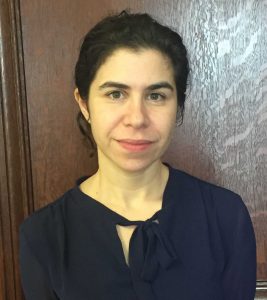
2:00 PM
Steinman Hall, Room #312
(Chemical Engineering Conference Room)
Columbia University
“Multi-modal Approaches to Accessing and Evaluating Collagen Gel Structure and Mechanics”
Understanding and controlling properties of collagen I from the molecular to network length scales offers a broad range of opportunities in biophysics and bioengineering. Collagen I networks are also a model soft-matter system distinct from most biopolymers owing to its long persistence length and thus may serve as a critical test-bed for various theories of (not so) semi-flexible polymers. We use multi-modal approaches, integrating optical microscopies with traditional bulk measurements of structure and mechanics, to assess collagen structure at equilibrium as well as during self-assembly and deformation. These experiments clarify the extent to which collagen networks can be described within the context of relatively simple theories, including nucleation and growth, critical percolation, and those describing origins of strain stiffening. In particular, we show 1) complementary imaging and rheology allows prediction of collagen gel storage modulus from network structure, 2) confocal microscopy reveals the particular structures that generate turbidity, 3) simultaneously performed confocal microscopy and rheology (confocal rheology) reveals whether structural and rheological definitions of gelation time coincide, and 4) confocal rheology reveals the deformations that occur alongside and potentially drive strain stiffening.
BRIEF ACADEMIC/EMPLOYMENT HISTORY:
PhD 2002, Chemistry, UC Berkeley (advisor: Graham Fleming)
Postdoc 2002-2004, Harvard (advisors: Sunney Xie and Dave Weitz)
Assistant, Associate, Full (2015- present), Department of Chemistry, Columbia
MOST RECENT RESEARCH INTERESTS:
Collagen from the molecular to network scale, cancer cell invasion within physiologically relevant 3D environments, cancer cell sorting, dynamic heterogeneity in supercooled liquids, exciton diffusion in single molecules and aggregates of conjugated polymers
